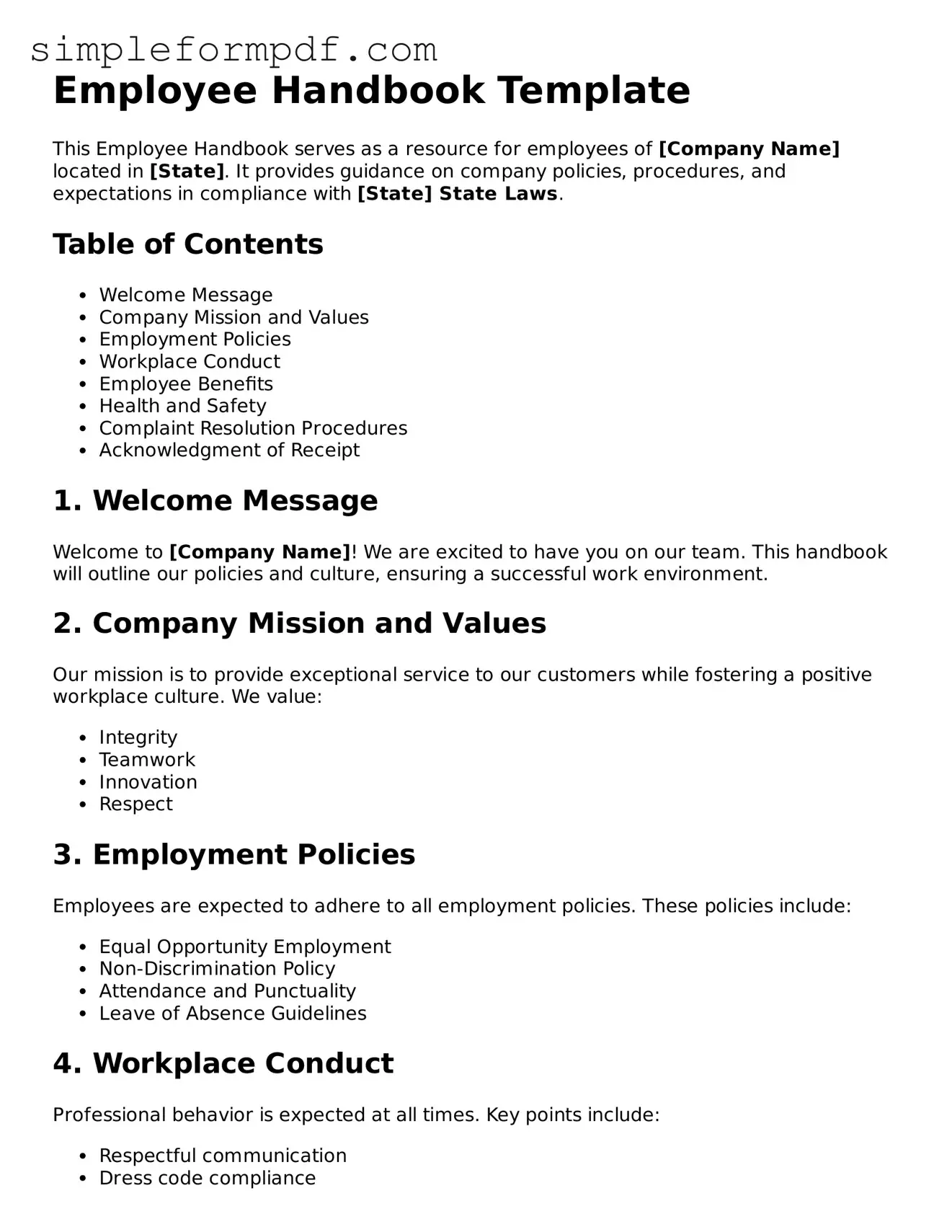Employee Handbook Template
This Employee Handbook serves as a resource for employees of [Company Name] located in [State]. It provides guidance on company policies, procedures, and expectations in compliance with [State] State Laws.
Table of Contents
- Welcome Message
- Company Mission and Values
- Employment Policies
- Workplace Conduct
- Employee Benefits
- Health and Safety
- Complaint Resolution Procedures
- Acknowledgment of Receipt
1. Welcome Message
Welcome to [Company Name]! We are excited to have you on our team. This handbook will outline our policies and culture, ensuring a successful work environment.
2. Company Mission and Values
Our mission is to provide exceptional service to our customers while fostering a positive workplace culture. We value:
- Integrity
- Teamwork
- Innovation
- Respect
3. Employment Policies
Employees are expected to adhere to all employment policies. These policies include:
- Equal Opportunity Employment
- Non-Discrimination Policy
- Attendance and Punctuality
- Leave of Absence Guidelines
4. Workplace Conduct
Professional behavior is expected at all times. Key points include:
- Respectful communication
- Dress code compliance
- Conflict resolution practices
5. Employee Benefits
As an employee of [Company Name], you have access to various benefits, including:
- Health Insurance
- Retirement Plans
- Paid Time Off
6. Health and Safety
The safety and well-being of our employees are a top priority. All employees must:
- Report any unsafe conditions
- Participate in safety training
- Follow emergency protocols
7. Complaint Resolution Procedures
If you encounter issues or conflicts, please follow these steps:
- Speak with your immediate supervisor.
- Reach out to Human Resources if unresolved.
- Follow up if needed.
8. Acknowledgment of Receipt
All employees must sign an acknowledgment form confirming they have received, read, and understood this handbook.
Employee Name: [Employee Name]
Date: [Date]
